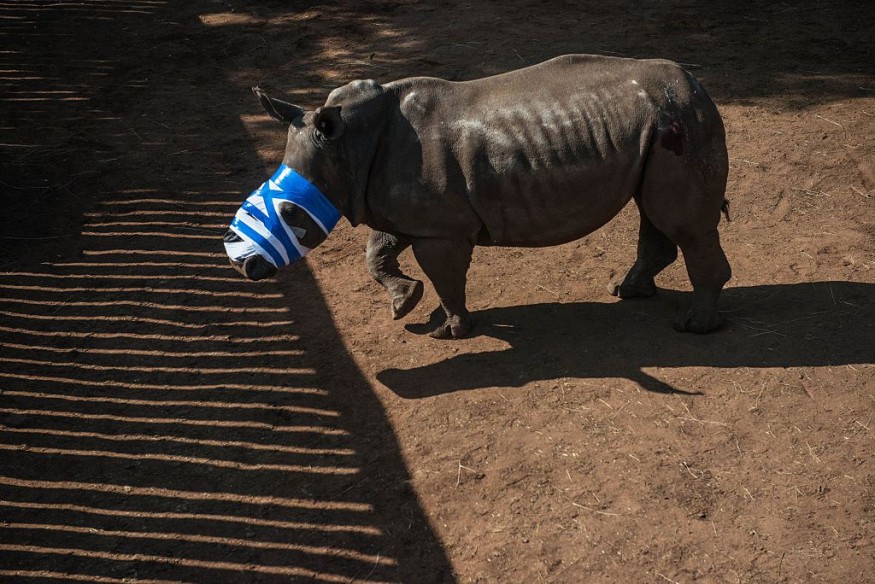In South Africa, a "weeping" rhino whose horn was chopped off by poachers has been released back into the wild. Seha, a Southern White rhino, was the sole survivor of a poaching incident in 2016 that claimed the lives of five rhinos. Seha was left for dead and discovered two weeks later by police.

Seha the Rhino
Seha, a Southern White rhino, was the sole survivor of a poaching incident in 2016 that claimed the lives of five rhinos. Seha was left for dead and discovered two weeks later by police.
A photo of Seha crying down his face went viral following the incident, causing anger among animal lovers worldwide. Seha has been kept in a highly supervised pasture since his rescue and has had 30 procedures to treat his ailment.
Saving The Survivors, a vet charity that rescues animals that have survived poaching attacks, took Seha in.
"Over half of rhinos succumb to their injuries and die after being assaulted by poachers because of the nature of the way poachers chop away," Tristan Wood, director of Saving the Survivors, told Newsweek. "The attack took everything away from him, including pieces of his skull, so he had a horrendous wound, but he survived."
Victim of Abuse
"Sadly, rhinos have very little legal value in South Africa, and when local police phoned to retrieve him, they expected we'd just come in and euthanize him... when our founder Dr. Johan came, we realized we had to do all we could to rescue him, given the species' diminishing numbers."
Seha will be released into the Marataba reserve on January 24 after years of rigorous surgery and care.
Although Seha will be living in the wild, Wood claims that being at this reserve will allow him to be constantly observed and taken in for wound treatment if necessary.
Poached rhino horns are utilized in traditional Chinese medicine, but they are also worn as a status symbol to show success and money.
Related Article : One of Last Remaining Northern White Rhinos "Retired" From Breeding Project to Save their Species
Poaching During Pandemic

Poaching has experienced "a tremendous comeback recently," according to Wood, with roughly 1,000 occurrences each year.
A rhino poaching plague began in 1970, wreaking havoc on black rhino numbers. The situation continued to erode populations far into the 1990s, to the point that only 2,475 black rhinos were remaining on the planet in 1993.
Rhino horn is utilized in Traditional Chinese Medicine, but it's also becoming more popular as a status symbol for displaying riches and accomplishment. Poaching is becoming a danger in all rhino range nations, but South Africa is being intensively targeted since it is home to most rhinos globally. Anti-poaching operations are becoming more critical than ever for field programs.
International criminal groups are now supplying poachers with sophisticated tools to track and kill rhinos. A tranquilizer pistol is frequently used to put down a rhino before its horn is chopped off, causing it to wake up and bleed to death slowly and painfully. Poachers are commonly armed with rifles, making them hazardous to anti-poaching teams who risk their lives to preserve rhinos.
The current scarcity of rhinos and the sporadic supply of rhino horn is driving up the price of horn, putting even more pressure on dwindling rhino populations. The potential to transform one's life by killing an animal they don't value is overwhelming for those whose annual income is typically well below the subsistence level.
For the most recent updates from the animal kingdom, don't forget to follow Nature World News!
© 2025 NatureWorldNews.com All rights reserved. Do not reproduce without permission.





